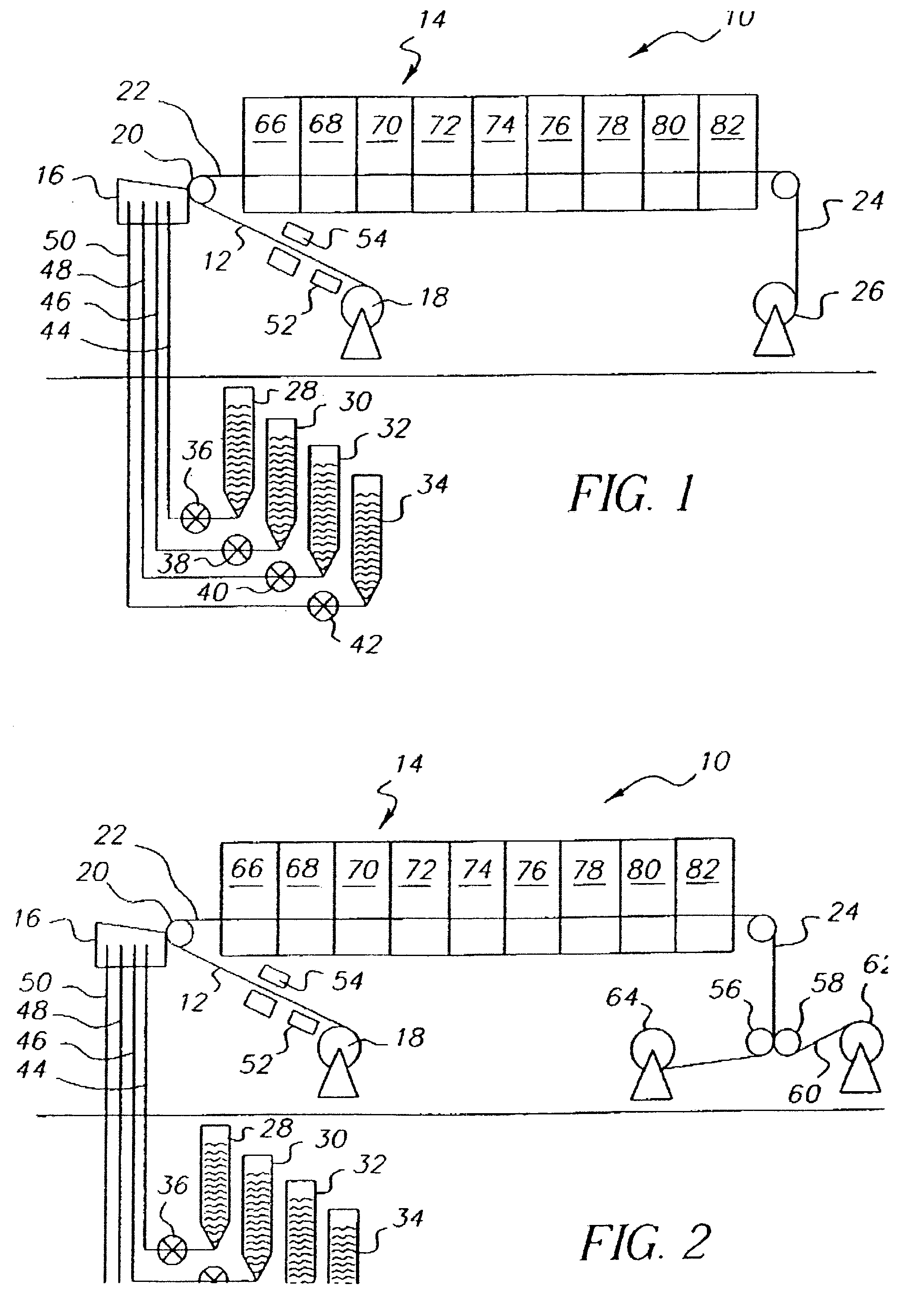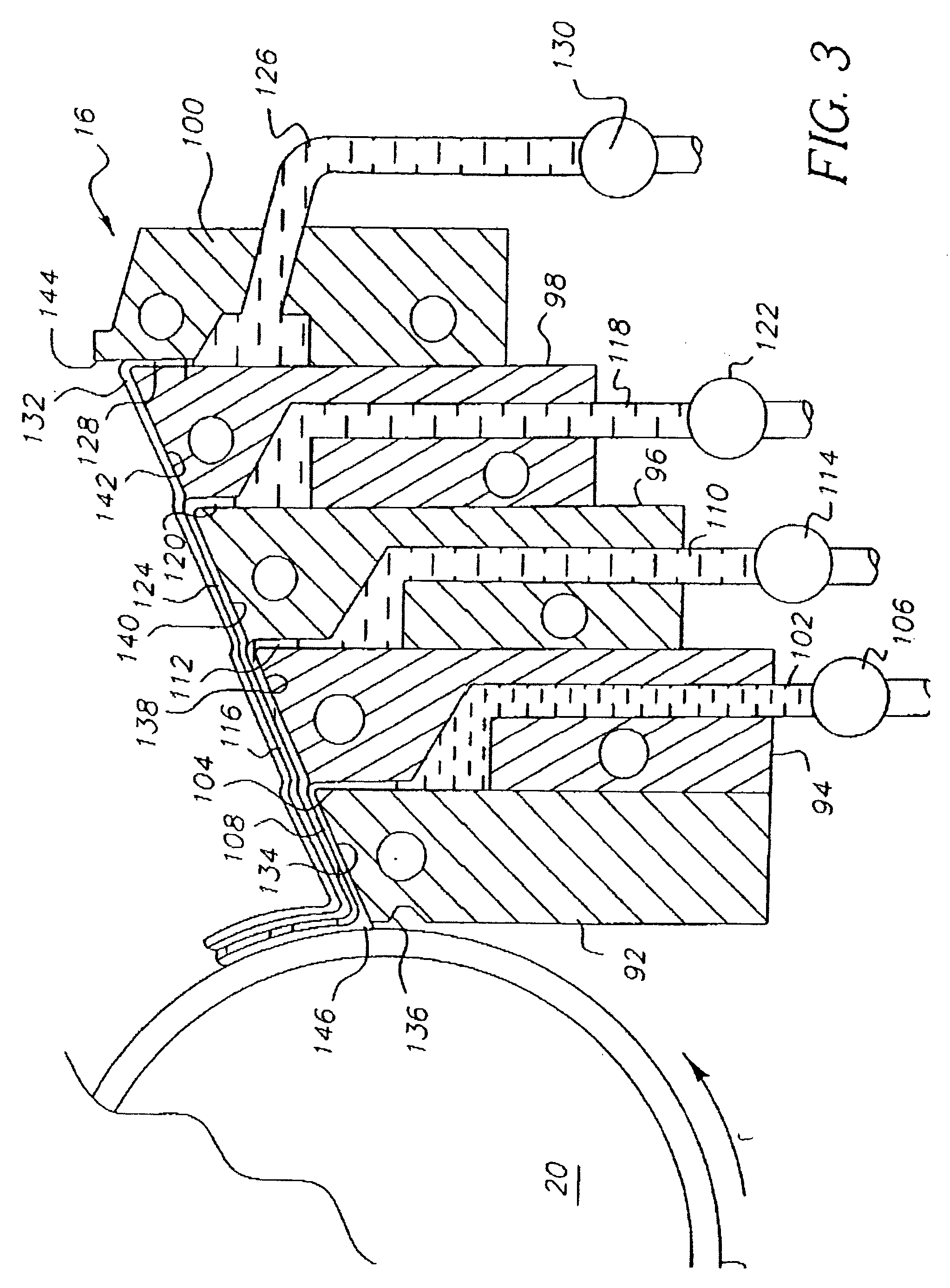Optical films and process for making them
a technology of optical resin and film, which is applied in the field of resin film manufacturing, can solve the problems of affecting the quality of optical resin films, the inability to meet the requirements of optical applications, and the fragile and dimensional instability of pva films used to form polarizers, and achieves low in-plane and out-of-plane birefringence, good dimensional stability, and easy fabrication
- Summary
- Abstract
- Description
- Claims
- Application Information
AI Technical Summary
Benefits of technology
Problems solved by technology
Method used
Image
Examples
Embodiment Construction
[0038] It is an object of the present invention to overcome the limitations of prior art casting methods and provide a new roll-to-roll coating method for preparing amorphous polymeric films having very low levels of both in-plane and out-of-plane birefringence. It is a further object of the present invention to provide a new method of producing highly uniform polymeric films over a broad range of dry thicknesses.
[0039] Yet another object of the present invention is to provide a method of preparing polymeric films by simultaneously applying multiple layers to a moving substrate in a roll-to-roll process. Still another object of the present invention is to provide a new method of preparing polymeric films with improved dimensional stability and handling ability by temporarily adhering the resin film to a supporting carrier substrate at least until it is substantially dry and then subsequently separating the carrier substrate from the resin film.
[0040] A further object of the presen...
PUM
| Property | Measurement | Unit |
|---|---|---|
| surface energy | aaaaa | aaaaa |
| adhesive strength | aaaaa | aaaaa |
| thickness | aaaaa | aaaaa |
Abstract
Description
Claims
Application Information
 Login to View More
Login to View More - R&D
- Intellectual Property
- Life Sciences
- Materials
- Tech Scout
- Unparalleled Data Quality
- Higher Quality Content
- 60% Fewer Hallucinations
Browse by: Latest US Patents, China's latest patents, Technical Efficacy Thesaurus, Application Domain, Technology Topic, Popular Technical Reports.
© 2025 PatSnap. All rights reserved.Legal|Privacy policy|Modern Slavery Act Transparency Statement|Sitemap|About US| Contact US: help@patsnap.com



